My impatience had turned into visual frustration as the azure blue sky above Pompano Beach, Florida, faded into silver clouds, eventually darkening into an impending storm. Thankfully, I had arrived at RIVA Racing‘s secret testing lake nearly an hour earlier than I had been asked to, and was quickly preparing both my safety gear and video cameras. Time was not on my side, and I wanted as much seat time as possible on RIVA’s newly-minted Stage III kit-equipped 2018 Sea-Doo RXT-X 300. RIVA’s Marcos Smith had promised speeds of 83-miles per hour from this machine, and having driven over 14 hours to southern Florida just to try it, I wasn’t going to be robbed of the opportunity.
The RXT-X 300 in question was not the same that RIVA Racing had on display at last year’s IJSBA World Finals (the same which was showcased in a special episode of our bi-monthly YouTube show, “Long Haul”). No, that was a “halo vehicle” designed to demonstrate what RIVA was capable of offering the so-inclined Sea-Doo performance enthusiast. The parts list on that special 350-horsepower ski was far more extensive than the Stage III kit I was test riding today. In fact, apart from some sporadic decal placement, the Neon Yellow and Lava Grey unit was thinly veiled as a completely stock ’18 Sea-Doo; no handling upgrades – sponsons, intake grate, hull extensions, etc. – no custom colors, seat cover or Hydro-Turf mat.
Rather, everything that made this RXT-X unique was tucked underneath the seat. RIVA’s Stage III kit focused mainly on increasing both air and fuel to the 1630cc ACE 300 engine, consisting of a Bosch VT1100 Fuel Injector Kit, a RIVA Sea-Doo 2018 RXT/GTX 300 Power Filter, a RIVA Sea-Doo 2018 RXT/GTX Catch Can/Engine Breather Kit, a RIVA Sea-Doo 230/300 Intake Manifold Upgrade Kit, a RIVA Sea-Doo 300 XX Charger, a RIVA Sea-Doo 2018+ RXT/GTX 300 Free Flow Exhaust Kit, a RIVA MaptunerX BRP (All except SPARK), a RIVA Seadoo 4-Tec Stock Valve Retainer Upgrade Kit and a Solas Sea-Doo Concord 13/18 Impeller (at the time of the test ride and video, plans for a Skat-Trak prop were still in place).
It was early March at this time, and the new machines were just now proliferating the showrooms. Initial sales in Australia were encouraging, and Sea-Doo brand loyalists here in the Northern Hemisphere were eager to get their hands on the new ST³ runabouts, therefore it was imperative that RIVA Racing get the parts developed and finalized before the season kicked off. Having racked up a considerable amount of ride time on the new ST³ platform, and being already impressed with Sea-Doo’s latest submission, I was eager to take to the water. RIVA’s Maptuner X ECU program had it so that the Sport mode was already engaged upon ignition, a welcome boon to those who hate toggling through the prompts. Although exiting through the factory outlet, the “uncorked” exhaust let off a healthy burble as I idled away from the dock.
With my knees tucked in tight around the faux tank and my shoulders up over the handlebars, I mashed the throttle against the grip. The bite of the repitched prop and the added boost, supplying an extra 2-pounds linearly across the torque curve, pushed the 828-pound runabout – according to onlookers – completely out of the water. I backed off, settled back into position and engaged the factory Launch Control feature on the VTS. Rather than porpoising out of the water (as I had done), the Launch Control automatically articulates the VTS nozzle so that the craft maintains a flat plane from a dead stop to full speed by toggling the VTS nozzle all the way down and gradually and automatically adjusting back to the previous pre-launch position, whatever that might be. Again, I readied and pinned the gas to full stop. This time, the Stage III-equipped Sea-Doo roared maniacally as it shot forward with devilish glee. By 8,580 rpm I was at 83mph.
With a snap of the handlebars, I was quickly reminded that this RXT-X had no handling upgrades. The increased, almost volcanic thrust and neck-snapping throttle response suddenly pushed the new hull beyond the limits of its fixed-position sponsons and top-loader intake grate. The prop was chewing up the lake furiously, but keeping the tail planted, while positioning the new ST³’s nose down became a balancing act. The ST³ wants its nose down, it begs for it. But with the stock sponsons and intake grate trying to keep traction while the added power pushed the ski further required bringing the nose up one or two notches up on the VTS trim. Yet, as I churned RIVA’s lake into a broiling tub of white caps, the elevated nose allowed the tall keel to sluice through chop with relative ease. “OK, that’ll work,” I smirked.
Gratefully, the low-centered, body-hugging cockpit of the new Sea-Doo’s Ergolock cabin was enough to keep me from sliding back along the bench – despite the centrifugal force the Stage III’s 330-horsepower was pressing upon my body. Pulling in to the dock, Marcos teased, “Did you like that?” Wheezing an exasperated yes, as I pried off my helmet the rain began to fall. He continued, “Good. I thought you’d like it.” For now, as the muscles in my forearms began to pulse, I’m thinking 330-horsepower is plenty dang impressive. RIVA Racing has untethered the ACE 300, and so too has it revealed the potential within the new ST³ hull. After two bouts with the RIVA-tuned RXT-X that morning, I chided, “This could effectively replace the RXP-X as well.” To which, several onshore nodded in accord. No, it won’t happen but the RXT-X definitely can perform when properly equipped.
In all, priced at $3,600.66, RIVA Racing’s Stage III kit is all one needs to have a reliable, hard-hitting 83mph Sea-Doo RXT-X (that still runs on pump gas). Throttle response is immediate but rightly progressive throughout the torque curve, there’s no flat spots or lulls. It just keeps pulling harder and harder. Thrust is – as I learned the hard way – enough to eject the ski almost entirely out of the water from a dead stop, but can push you out of an apex faster than you ever thought possible. With all this being said, it is absolutely remarkable how easily RIVA makes 80mph obtained. What was once the benchmark of absolute, bleeding edge performance is now readily attainable through ECU remapping, and a short list of intake, exhaust and cooling additions, and all for less than $4,000. I’m absolutely floored.





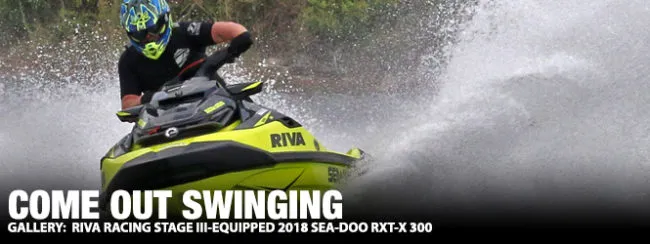



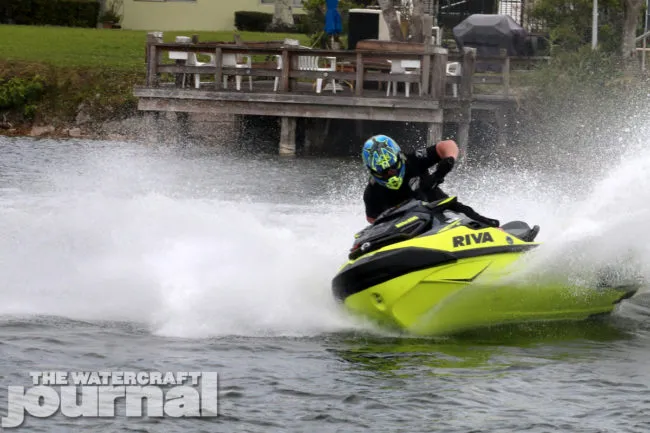
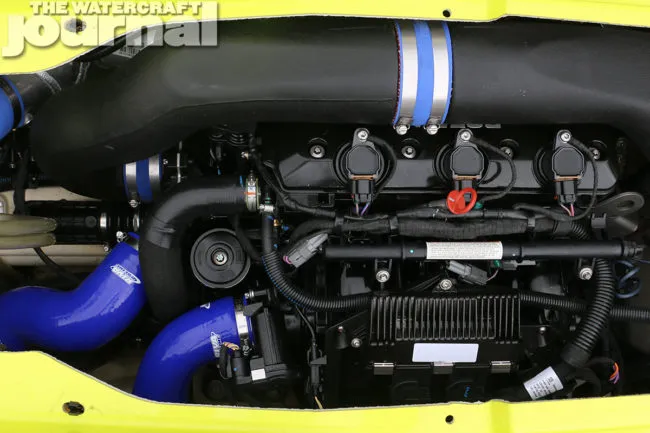
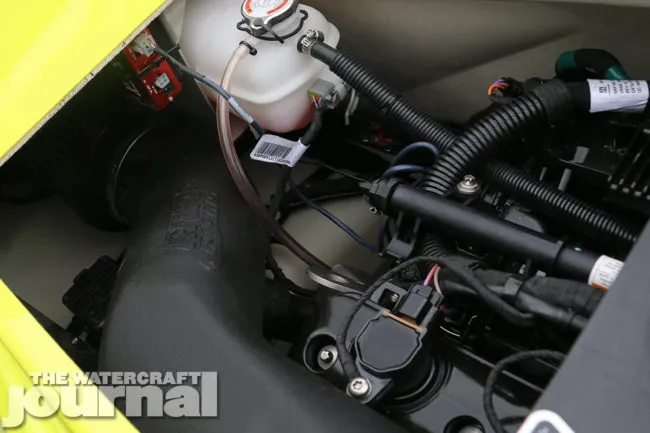
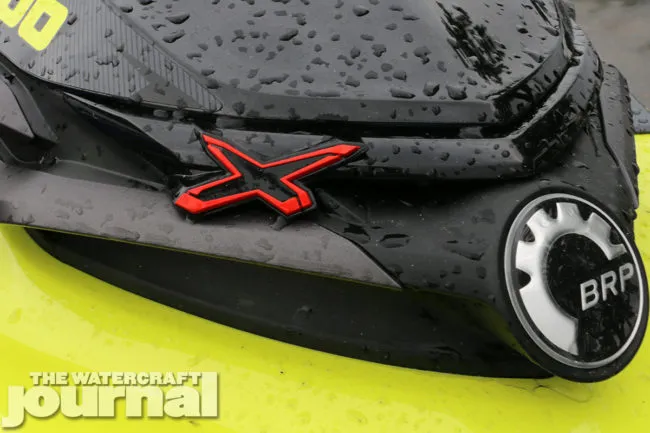



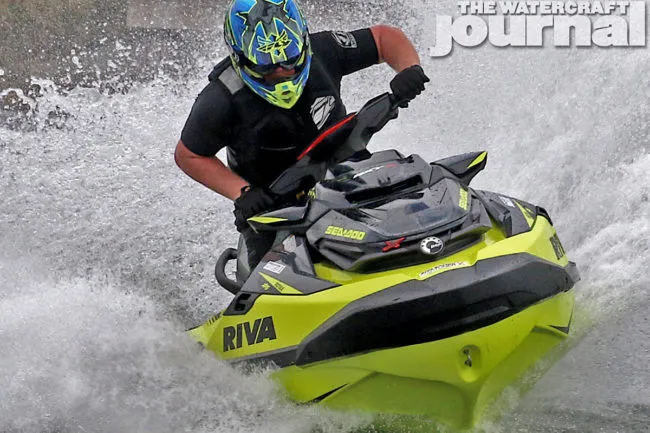



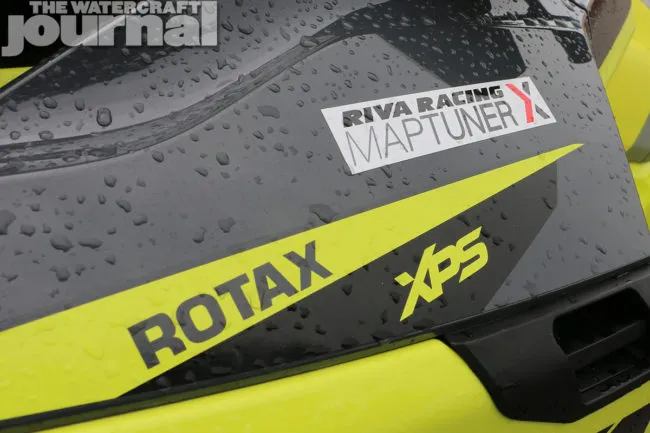

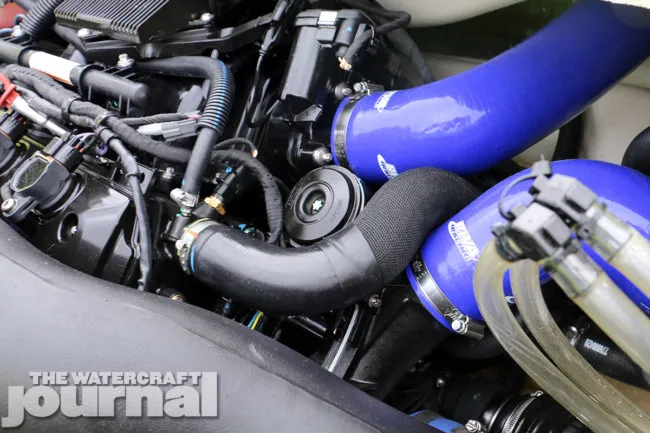
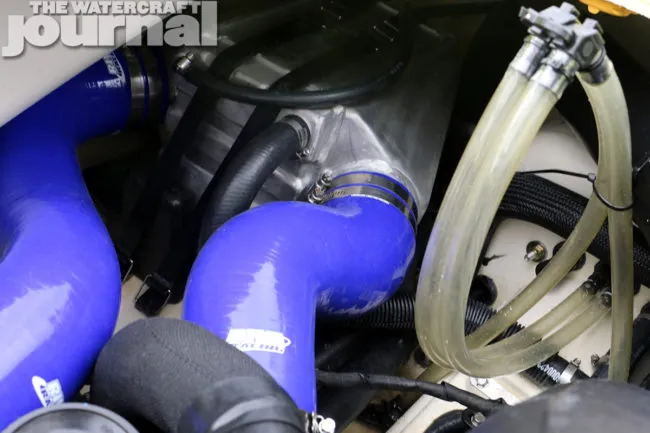

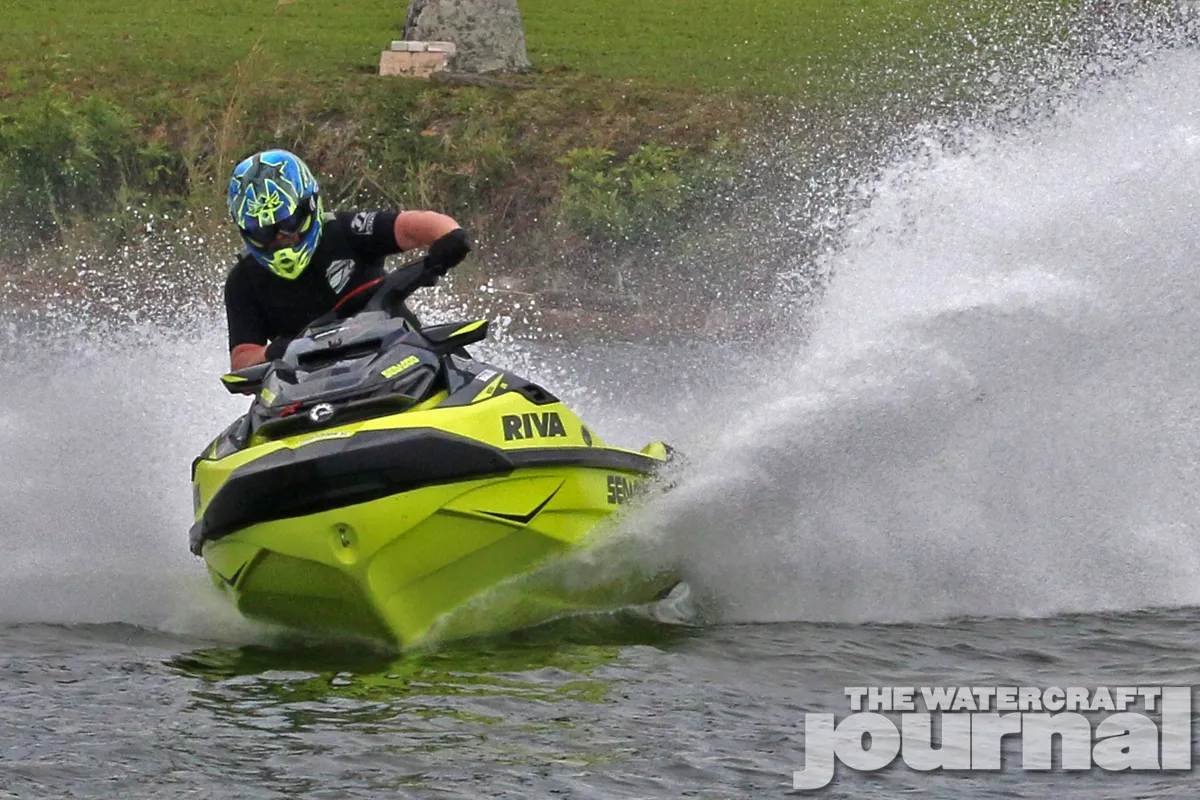
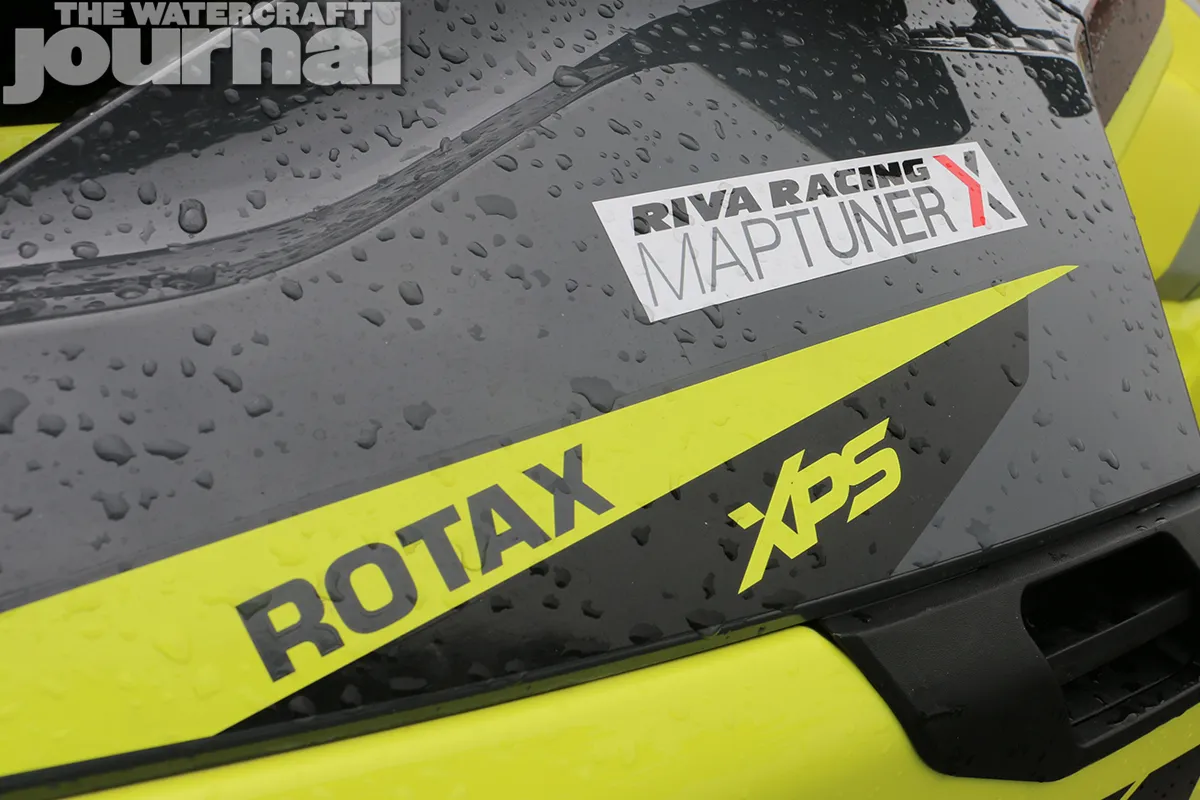

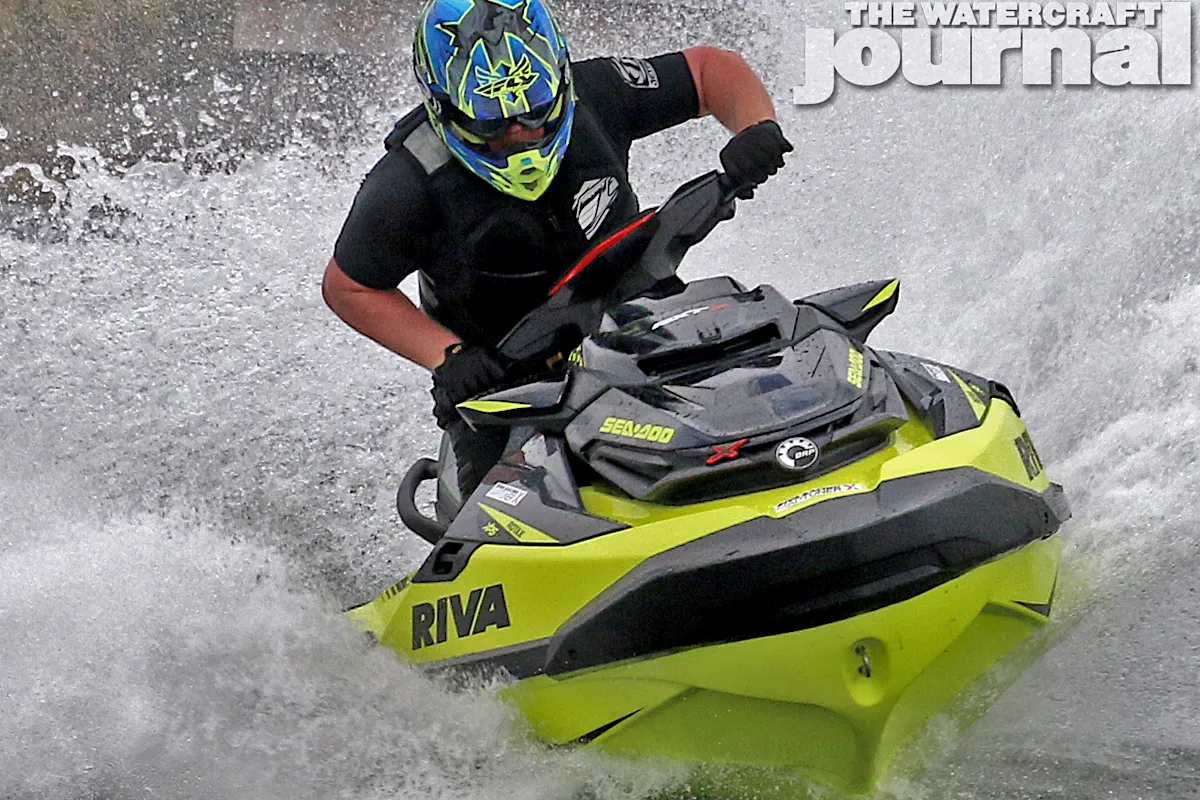


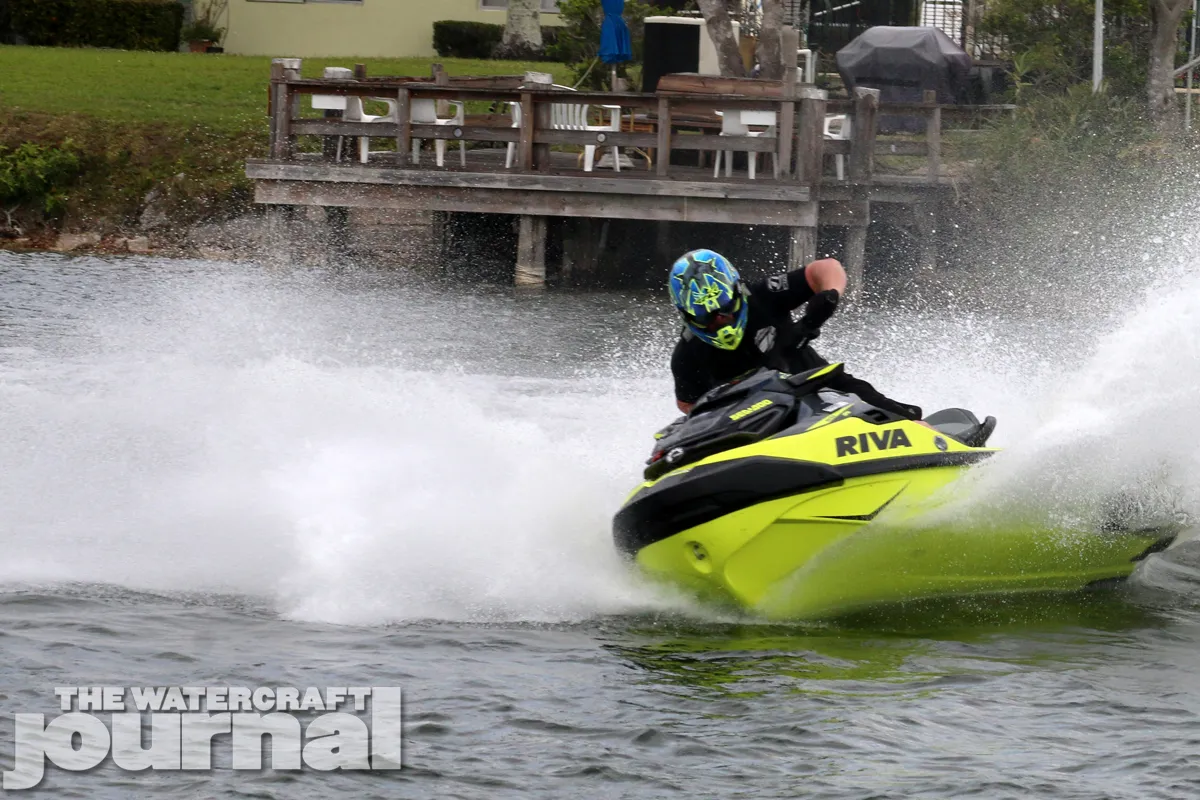










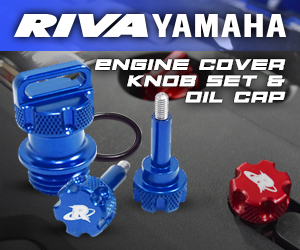

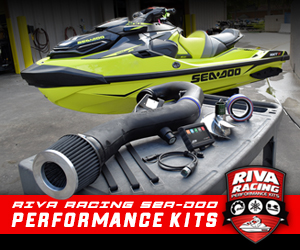
[…] Gallery: RIVA Racing’s Stage III-Equipped 2018 Sea-Doo RXT-X 300 […]